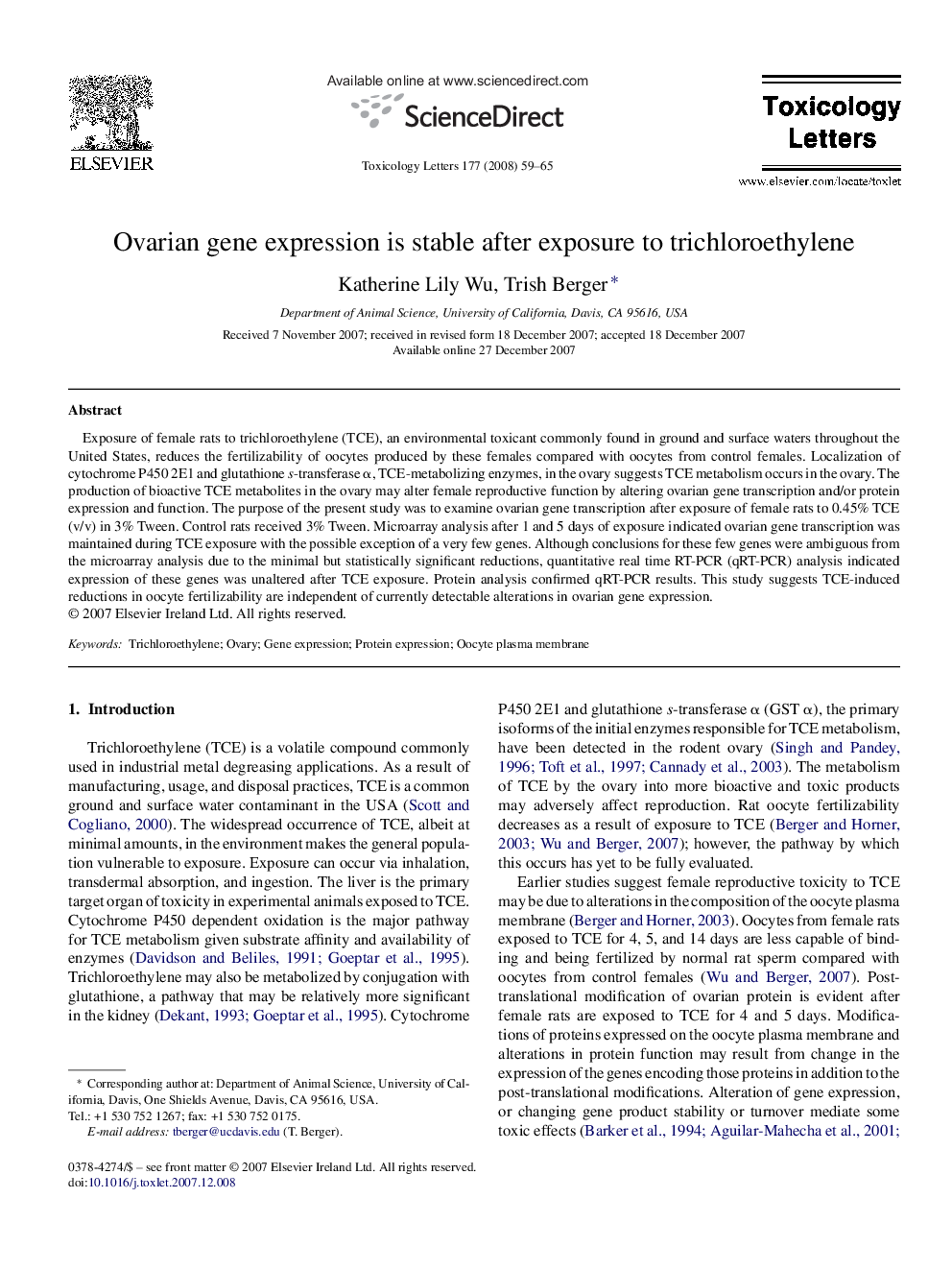| Article ID | Journal | Published Year | Pages | File Type |
|---|---|---|---|---|
| 2601425 | Toxicology Letters | 2008 | 7 Pages |
Exposure of female rats to trichloroethylene (TCE), an environmental toxicant commonly found in ground and surface waters throughout the United States, reduces the fertilizability of oocytes produced by these females compared with oocytes from control females. Localization of cytochrome P450 2E1 and glutathione s-transferase α, TCE-metabolizing enzymes, in the ovary suggests TCE metabolism occurs in the ovary. The production of bioactive TCE metabolites in the ovary may alter female reproductive function by altering ovarian gene transcription and/or protein expression and function. The purpose of the present study was to examine ovarian gene transcription after exposure of female rats to 0.45% TCE (v/v) in 3% Tween. Control rats received 3% Tween. Microarray analysis after 1 and 5 days of exposure indicated ovarian gene transcription was maintained during TCE exposure with the possible exception of a very few genes. Although conclusions for these few genes were ambiguous from the microarray analysis due to the minimal but statistically significant reductions, quantitative real time RT-PCR (qRT-PCR) analysis indicated expression of these genes was unaltered after TCE exposure. Protein analysis confirmed qRT-PCR results. This study suggests TCE-induced reductions in oocyte fertilizability are independent of currently detectable alterations in ovarian gene expression.
